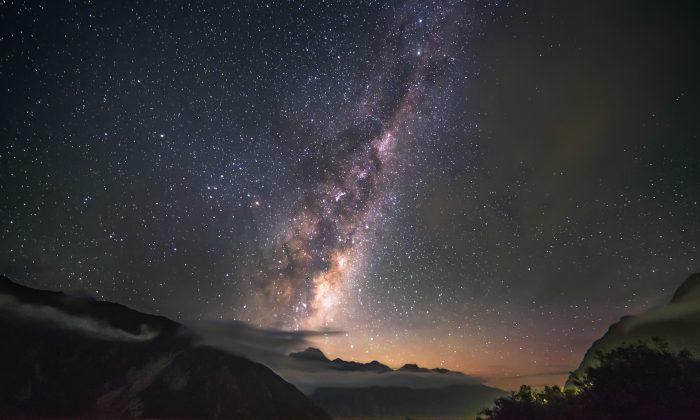In the Milky Way Galaxy, you have two kinds of stars: those that stay put and stars that like to travel far from home.
A new map of the Milky Way, created by scientists with the Sloan Digital Sky Survey (SDSS), shows that a surprisingly large proportion, 30 percent, of its stars are wanderers that have dramatically changed orbits during their lifetimes.
The discovery, published in the Astrophysical Journal, brings a new understanding of how stars are formed, and how they travel throughout our galaxy, researchers said.
100,000 Stars
To build a map of the Milky Way, scientists used the Sloan Digital Sky Survey Apache Point Observatory Galactic Evolution Explorer (APOGEE) spectrograph to observe 100,000 stars over a four-year period.
“The chemical composition of a star is really a ‘fossil record’ of the chemical makeup of the gas cloud in which the star formed,” said Jonathan Bird, a postdoctoral fellow in the Vanderbilt University Initiative in Data-intensive Astrophysics. “APOGEE’s main mission is to collect these fossils from all over the galaxy.”
One of the uses of this astro-fossil record is to determine where stars were born. As they burn, stars create heavy elements. When they die, these elements are dispersed into the surrounding area.
As a result, new stars that form in the vicinity are enriched in heavy elements. The process of star formation has proceeded at different rates in different parts of the galaxy, so the level of enrichment varies from place to place. This allows astronomers to narrow in on a star’s birthplace and determine whether it has traveled a significant distance, or not.
Galactic Archaeology
The APOGEE project is transforming the relatively new field of “galactic archaeology” that uses fossil records of stars throughout the galaxy to reconstruct the history of the Milky Way, Bird said.
Previously, interstellar dust has blurred the light coming from stars that lie beyond our local, galactic neighborhood to such as degree that astronomers could not get the high-resolution spectroscopic data they needed to determine the provenance of distant stars.
However, APOGEE has now solved this problem by using infrared light that penetrates the dust and so can provide the precise information about the velocities and chemical composition of stars that astronomers need throughout the galaxy.
As a result, “the APOGEE survey gives us the opportunity to piece together the formation history of the entire galaxy,” Bird said.
[aolvideo src=“http://pshared.5min.com/Scripts/PlayerSeed.js?sid=1759&width=480&height=350&playList=518808110&responsive=false&pgType=console&pgTypeId=editVideo-overviewTab-copyCodeBtn”]
This article was originally published by Vanderbilt University. Republished via Futurity.org under Creative Commons License 4.0.




Friends Read Free